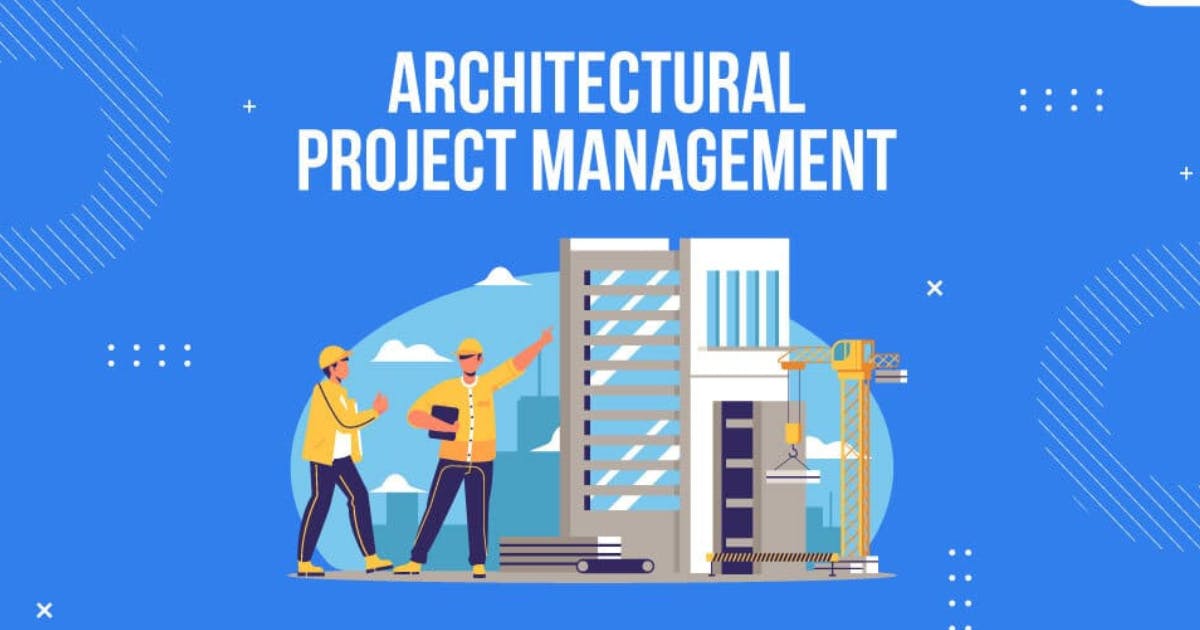Mastering Project Management from Concept to Completion: An Architect's Guide

Introduction to Project Management for Architects
Project management is a crucial discipline for architects as their roles have expanded beyond just design. Nowadays, architects are involved in tasks such as gathering client requirements, budgeting, scheduling, team coordination, obtaining permits, and overseeing construction. To effectively handle these diverse responsibilities, architects need to adopt a project management mindset.
Project management provides frameworks, techniques, and tools to plan and execute projects successfully. Key concepts include defining project scope, assembling teams, creating detailed plans and schedules, establishing communication channels, monitoring budgets, managing changes, overseeing quality, and mitigating risks.
While project management originated in industries like construction and engineering, it has now become common across various sectors. For architects, adopting project management brings structure and rigor to delivering complex, high-stakes projects on time and within budget. It enables architects to take on a leadership role throughout the entire project lifecycle, rather than just during the design phase.
With training and experience in project management methodology, architects develop skills to align stakeholder expectations, build high-performing teams, create realistic project roadmaps, communicate effectively, and ultimately ensure successful project outcomes. Project management has become an essential core competency for architects in the 21st century.

Key Project Management Concepts
Construction projects involve many moving parts that need to be carefully coordinated. As an architect leading a project, you'll need to have a solid grasp of some key project management concepts and tools.
Phases of a Construction Project
Most construction projects go through several typical phases:
- Pre-design - This involves initial planning, programming, feasibility studies, and establishing goals.
- Schematic design - The initial design concept is developed, showing the scale and relationships between project components.
- Design development - The schematic design is refined, including more detailed plans, outline specs, and cost estimates.
- Construction documents - Detailed drawings and specifications are produced to guide pricing and construction.
- Procurement - Bids are obtained and contracts awarded to general contractors and key subs.
- Construction - The project is built based on the construction documents.
- Closeout - Administrative and financial closure procedures, and final inspections.
Work Breakdown Structure
- A Work Breakdown Structure (WBS) delineates the tasks necessary for project completion.
- It organizes the work into manageable sections, from the overarching project to smaller, more defined work packages.
- Creating a WBS is crucial for:
1. Identifying project requirements.
2. Estimating costs accurately.
3. Assigning responsibilities effectively.
4. Tracking progress efficiently.
- It serves as the foundation for developing detailed schedules.
Critical Path Analysis
- Critical Path Analysis involves examining dependencies among activities to determine the shortest project timeline.
- The critical path comprises activities that, if delayed, will extend the project's finish date.
- By scrutinizing the critical path, the project manager can prioritize activities that heavily influence the project schedule.
- Allocation of extra resources to critical path tasks can prevent delays and ensure timely project completion.

Managing Budgets and Schedules
- Effective management of budgets and schedules is essential for project success.
- Continuous monitoring and control are necessary to ensure adherence to the allocated budget and timeline.
- Earned value analysis serves as a tool to compare completed work against the budget and schedule, highlighting any discrepancies.
- The project manager bears the responsibility of rectifying any deviations from the plan.
- Solutions may involve modifying the project plan, acquiring additional funding, or collaborating with contractors to enhance performance.
Assembling the Project Team
One of the architect's primary responsibilities is to assemble the appropriate project team. Acting as the lead designer, the architect plays a central role in selecting key team members and fostering productive collaboration.
Architects typically include various professionals in their project teams, such as:
- Structural engineers - They contribute expertise on structural systems, ensuring designs are both feasible and compliant with building codes. Their responsibilities include generating technical drawings and conducting calculations.
- MEP (mechanical, electrical, plumbing) engineers - These professionals design essential building systems like HVAC, plumbing, fire protection, power, and lighting.
- General contractor - Responsible for overseeing the construction process, coordinating subcontractors, and adhering to budget and timeline constraints.
- Specialty contractors - This category encompasses experts in specific fields such as solar installation, acoustics, and audio-visual systems. Architects identify specialized requirements and engage appropriate contractors accordingly.
- Interior designers - Collaborating closely with architects, interior designers focus on space planning and selecting finishes, furnishings, and decorative elements.
- Landscape architects - They design outdoor spaces such as gardens, green roofs, and plazas, working alongside architects to ensure harmony in site circulation and outdoor aesthetics.
Assembling a cohesive project team is paramount but can pose challenges. Architects must pinpoint the right specialists for each project while considering factors like budget constraints and previous working relationships
Effective communication and collaboration are essential. Architects may organize design charrettes, meetings, and workshops to facilitate coordination among team members. Through strong leadership and collaboration, the project team can address challenges collectively, ultimately leading to superior project outcomes.

Creating a Project Plan
1.Understanding Scope, Objectives, and Deliverables:
- Define project scope: What's included and excluded.
- Gather client's goals, requirements, and expectations.
- Gather details on building type, size, function, design elements, and budget.
- Identify measurable objectives and specific deliverables for each phase.
2.Work Breakdown Structure (WBS):
- Break down work into smaller components using WBS.
- Organize project deliverables, tasks, and subtasks hierarchically.
- Helps in scheduling, budgeting, and identifying what needs to be accomplished.
- Divide work vertically into phases and horizontally into related activities.
3.Tasks, Timelines, and Resources:
- Detail specific tasks, time estimates, and required resources using WBS.
- Identify predecessor and successor tasks, milestones, and critical path.
- Create a realistic schedule with reasonable task durations.
- Determine needed personnel, equipment, and materials.
- Incorporate contingencies for risks.
- Utilize project management software for visualization, timeline optimization, resource assignment, and progress tracking.
4.Project Execution Efficiency:
- Well-defined project plan ensures efficient execution.
- Helps in completing projects on time and within budget, while meeting client objectives.
- Effective planning is crucial for project success.
Managing the Design Phase
The design phase is where the architect's leadership and creative skills really shine through. As lead designer, the architect oversees the workflow and coordinates all the consultants to develop a cohesive design.
Architect's Leadership Role
The architect is like the captain of a ship, leading the team in designing buildings. They come up with ideas and ensure everyone works together towards the same goal. The architect also talks with the client to get their approval on the designs. They must make important decisions to solve any problems that come up. Overall, the architect's job is to keep the design on track and make sure it stays true to the original vision.
Managing Workflow and Deliverables
- During the design phase, there are multiple workflows taking place simultaneously.
- The architect focuses on developing overall concepts and schematics.
- Engineers concentrate on systems design, while consultants provide specialized expertise.
- The architect is responsible for managing timelines and deliverables to ensure smooth progress.
- A detailed project schedule is used to plan major milestones and deliverables, such as concept designs, schematic documents, design development, and construction documents.
- Interim deadlines are set by the architect for engineers and consultants to submit their work.
- The architect reviews submissions for completeness and consistency.
- All components are integrated into cohesive design packages. Effective organization and communication are essential for maintaining a smooth design workflow.

Coordinating Consultants
- Architects work closely with engineers such as structural, mechanical, and electrical engineers to ensure that their system designs fit well with the architecture.
- Coordination and collaboration are vital to produce a unified and feasible design.
- Architects also manage specialty consultants such as lighting designers, acoustical consultants, and sustainability experts.
- They ensure that consultants meet deadlines and maintain consistency with the design plan.
- With multiple firms involved, sharing information and communicating clearly is crucial.
- Architects should allocate time for coordination, prevent duplications, and establish clear expectations for deliverables.
- Ensuring everyone stays on the same page leads to a comprehensive design.
Managing Bidding and Procurement
During the bidding and procurement phase, architects play a vital role in finding suitable contractors and vendors for the project while staying within budget. The architect takes the lead in selecting construction contractors through a competitive bidding process.
Architect's Responsibilities in Contractor Selection:
- Develop Bid Packages - The architect prepares detailed specifications, drawings, and bid documents to provide to potential contractors, enabling accurate bidding on the required work.
- Host Pre-bid Meetings - It's advisable for the architect to conduct pre-bid conferences where contractors can review bid requirements and seek clarification.
- Evaluate Bids - The architect carefully assesses all received bids considering cost, qualifications, experience, and other criteria. They provide bid analysis and recommendations to the client.
- Negotiate Contracts - Following the client's selection of the winning bidder, the architect assists in negotiating the final construction contract to safeguard the client's interests.
Vetting Vendors and Suppliers
During the bidding process, the architect assists in evaluating crucial vendors and suppliers by:
- Evaluating Qualifications - This involves examining their experience, quality of work, safety records, and client feedback.
- Confirming Availability - Ensuring that vendors can deliver services within the project's timeline.
- Analyzing Pricing - Comparing bids to ensure a fair comparison of pricing and commercial terms.
- Assessing Financial Stability - Reviewing financial statements to ensure vendors are financially stable.
- Ensuring Legal Compliance - Validating that vendors meet all legal requirements such as licensing, insurance, and bonding.
- Contract Negotiation - Collaborating with the client's legal team to negotiate favorable supply contracts.
By implementing careful bidding and procurement processes, the right contractors and vendors are selected, leading to the successful completion of high-quality projects. Architects play a crucial role in overseeing this phase.

Overseeing Construction
- During the construction phase, architectural plans are brought to reality.
- The architect's role is vital during this stage.
- The general contractor manages day-to-day construction activities.
- However, the architect still holds a crucial oversight role.
On-site Visits and Inspections
- The architect needs to schedule regular visits to the construction site.
- These visits help the architect observe progress and quality visually.
- Any problems or defects can be spotted and dealt with promptly.
- During crucial stages, daily or weekly inspections might be necessary.
- Payments for completed work require the architect's approval.
Change Order Management
- During construction, unexpected situations, mistakes, or changes in scope often occur.
- The architect assesses change order requests from the contractor to ensure they are reasonable.
- If the change order is accepted, the architect needs to revise plans and documents accordingly.
- Efficient management of change orders ensures that the original design vision is maintained and the project stays within budget.
Payments, Invoices, Paperwork
- The architect is responsible for managing payments, invoices, lien waivers, and other construction paperwork.
- Keeping track of administrative tasks is crucial to ensure contractors and vendors receive timely payments, maintaining progress on the job.
- The architect needs to document every phase of the project meticulously using photographs and notes.
Managing Budgets and Schedules
Managing budgets and schedules is crucial in architectural projects. As the architect, it's vital to keep track of costs and timelines to prevent overspending and delays. Here are some simplified tips:
- Keep a record of all project expenses like design fees, permits, materials, and labor. Regularly compare these costs to your initial budget, like every week or month.
- Be prepared for unexpected expenses by having a backup budget of around 10-15%. If costs go beyond this, discuss with the client about increasing the budget or reducing the project scope.
- Get bids from different suppliers and contractors for important parts of the project to manage costs effectively.
- Check the general contractor's payment requests regularly to catch any errors.
- Allow extra time for critical tasks in case of delays. Keep track of important milestones and adjust the schedule if needed.
- Consider possible delays like bad weather or permit issues when planning the schedule. Update the schedule when delays happen.
- Inform the client and contractor promptly about any schedule changes to manage expectations.
By carefully managing budgets and schedules, you ensure that the project stays financially viable and finishes on time. Your role as the architect is crucial in overseeing any deviations and making necessary adjustments. Planning ahead and keeping a close eye on progress make budget and schedule management much simpler.
Communication and Documentation
Effective communication and organized documentation are crucial for architectural projects. As the lead architect, you must:
- Develop a communication plan detailing channels (email, phone, meetings), frequency, and protocols.
- Hold regular project meetings, document minutes, and send recap emails.
- Set expectations for response times and use collaboration tools like Slack.
- Maintain a contact sheet with stakeholder information.
- Keep a decision log, change orders, and revisions documented.
- Use centralized document management systems like SharePoint for file sharing.
- Ensure all partners have access, set up naming conventions, and enable version control.
- Backup documents regularly and consider security measures.
Clear communication and proper documentation reduce risks and facilitate collaboration, essential for successful architectural projects.

Wrapping Up the Project
After construction, the project enters the closing phase. Key steps for architects include:
- Punch Lists and Closure - Identify any remaining issues with the contractor and owner, ensuring completion and obtaining necessary paperwork.
- As-Built Documentation - Collect final drawings and update specs to reflect changes made during construction.
- Client Handoff - Walk through with the client, hand over keys and documents, and ensure they understand maintenance needs.
- Post-Project Review - Evaluate project performance, team effectiveness, and finances. Archive documents and celebrate completion.
Completing these steps ensures the owner gets the intended product and helps architects learn for future projects.






